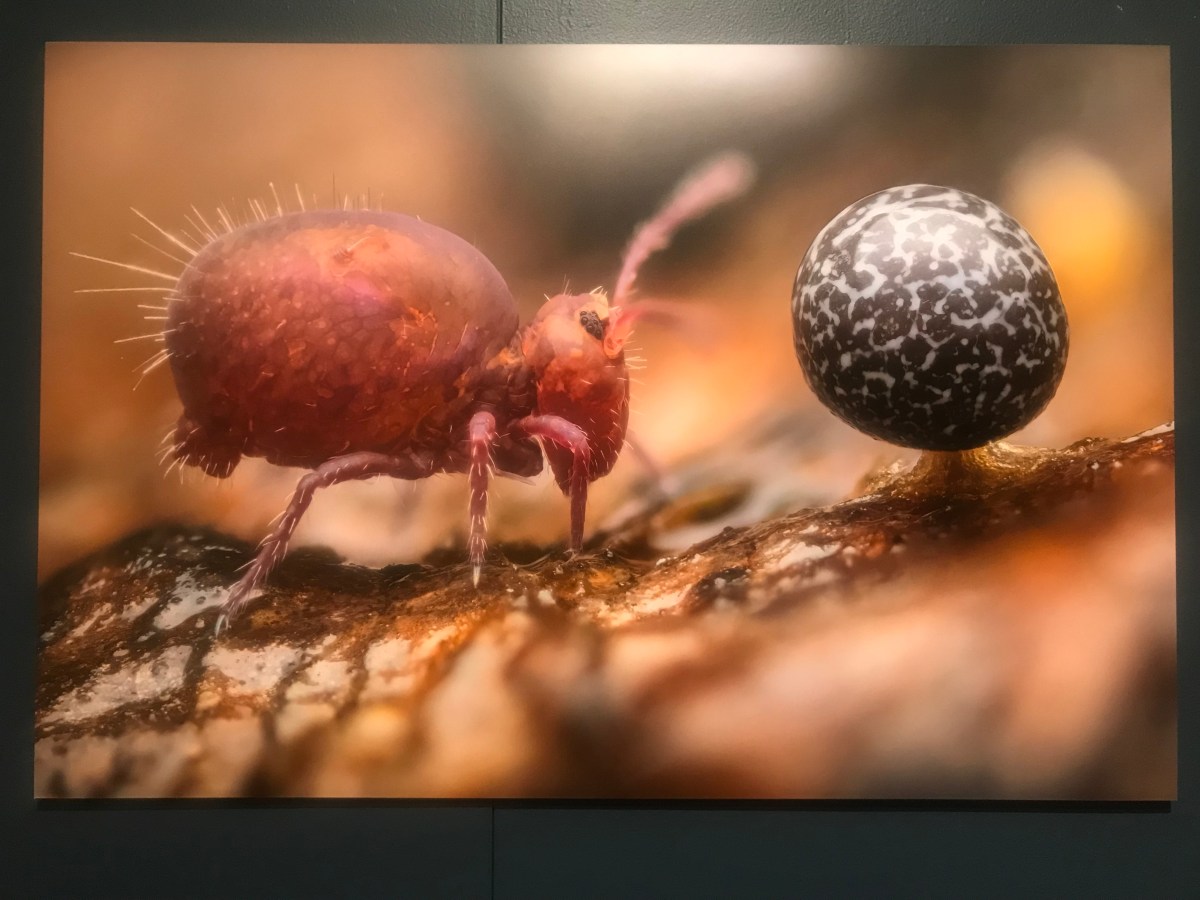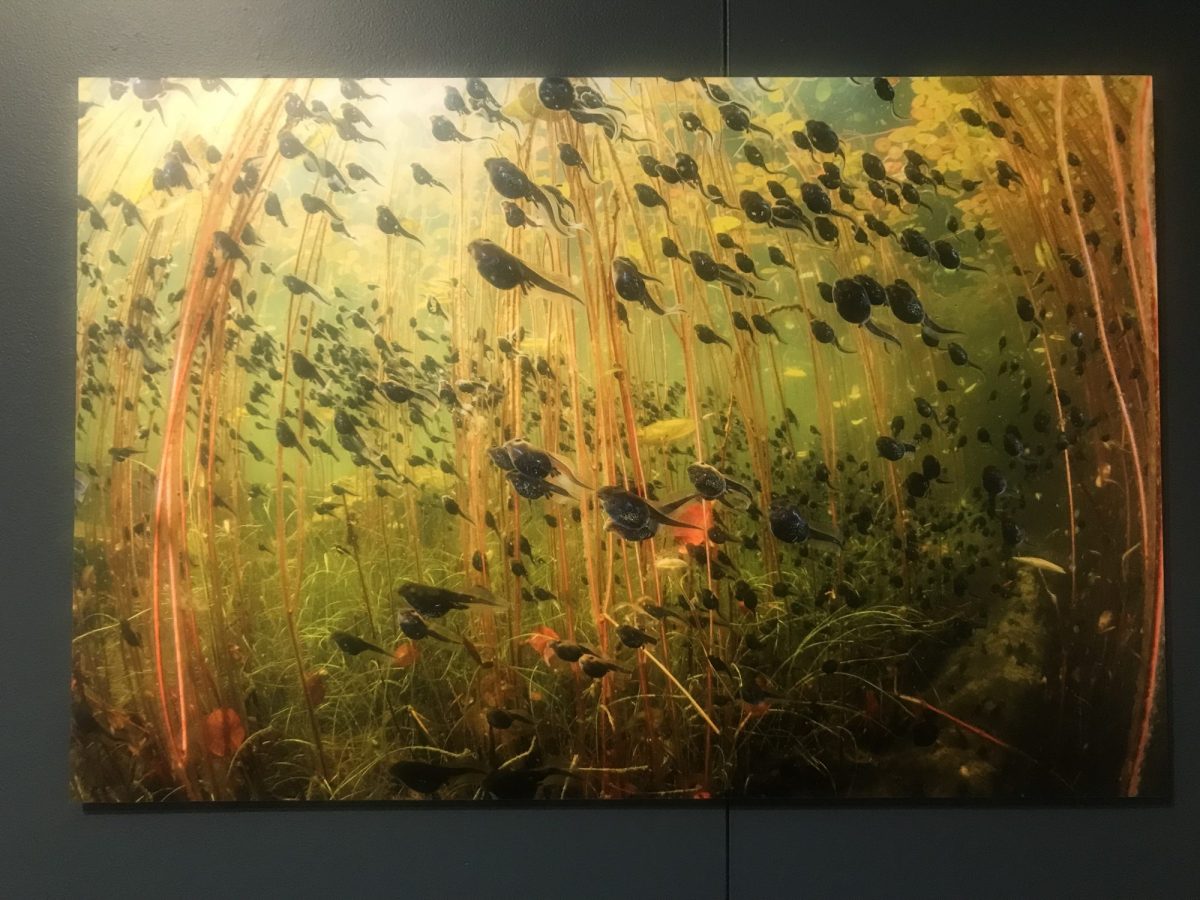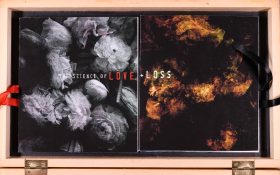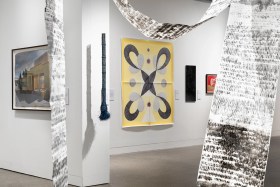As a kind of sister exhibition to the Ocean Photographer of the Year Exhibition currently at Seaworks in Williamstown (until 13 July), the National Wool Museum in Geelong is hosting the Wildlife Photographer of the Year exhibition, in a collaboration with the National History Museum in London.
Mirroring the Ocean Photographer exhibition, the Wildlife Photography exhibition features the winners and highly commended entries of multiple categories, such as Behaviour: Mammals (and Birds, Amphibians and Reptiles and Invertebrates), Urban Wildlife, Plants and Fungi, Photojournalism and, of course, the Grand Title Winners – this year Alex Tinker-Tsavalas’s Life Under Dead Wood and Shane Gross’ The Swarm of Life.
The former is a microscopic image of “the fruiting bodies of slime mould and a springtail [an insect-like animal, but not technically an insect]”, which used a photographic technique called “focus stacking” to achieve a photo, with incredible clarity, of subjects barely two millimetres long. The latter is a shot of a huge swarm of tadpoles, which astonishingly looks more like a painting than a photo.

Since every photo in the exhibition is either a category winner or a highly commended, every single shot is extraordinary, such as Igor Metelskiy’s stretching lynx seemingly thousands of miles from anywhere, Theo Bosboom’s primal landscape of sea, rocks and mussels or Robin Darius’ Tiger in Town, which won the Urban Wildlife prize and shows a tiger cautiously resting on a hill overlooking a small rural town. The Photojournalism Story Award is essentially given to a photographic essay, and this year it was won by Thomas Peschak’s collection of photos called Dolphins of the Forest, centred on the Amazon river dolphin. These dolphins, as Peschak’s work describes them, weave around the trees when the forest is flooded, and have a long and complicated history with the local people.
The exhibition, housed within the Wool Museum, is beautifully presented. A handful of images are printed on double-sided sheets, which hang from ceiling to floor, giving the room a smooth, somewhat regal look; one of those images is Jason Gulley’s superb photo of manatees, and one of the photos used in the exhibition’s publicity, Jose Manuel Grandio’s snow-leaping stoat.
There are also children’s activities, such as finding animals in the exhibition that start with all letters of the alphabet or finding scary or common or colourful animals. A neat touch for those people coming with kids.
Read: Comedy review: Nazeem Hussain: You Paid for This, various venues, MICF 2025
Of course, a bonus is that this show is in the Wool Museum. It’s another world to explore upstairs, filled with an array of bizarre machines that convert wool from what you see a sheep wearing to what you see humans wearing. It’s a more complicated process than you may think.
If you appreciate nature photography, or just photography, or just nature, this exhibition is sublime.
Wildlife Photographer of the Year will be exhibited until 18 May 2025; ticketed.





